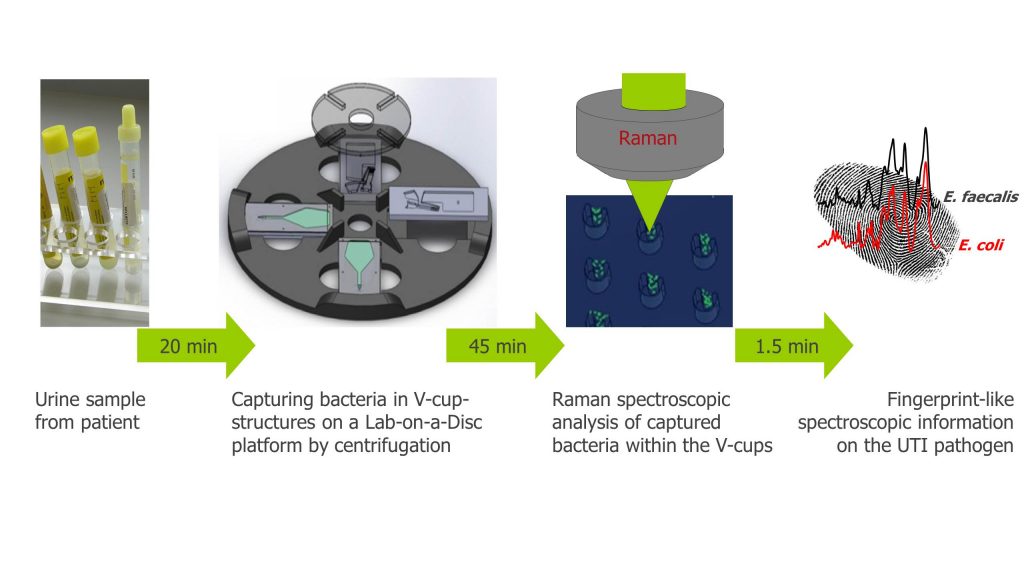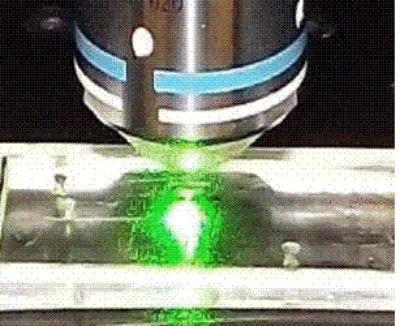Urinary tract infections can be a miserable experience for people. Confirmation of a urinary tract infection typically involves a urine sample and takes about 24 hours to acquire any results. Untreated, the infection can even lead to the life-threatening condition called sepsis.
A team of German and Irish researchers decided to develop a device that could speed up methods for detection of the bacteria that cause urinary tract infections.
The device, a Lab-on-a-Disc platform that combines microfluidics and Raman microscopy for bacteria detection, is described in the journal Biomicrofluidics, from AIP Publishing.
The diagnostics device uses centrifugal force to capture the tiny bacteria directly from a patient’s urine. They used sample sizes as small as a raindrop for testing.

(Image Credit: Ute Neugebauer/Jena University Hospital)
“Our device works by loading a few microliters of a patient’s urine sample into a tiny chip, which is then rotated with a high angular velocity so that any bacteria is guided by centrifugal force through microfluidic channels to a small chamber where ‘V-cup capture units’ collect it for optical investigation,” said Ulrich-Christian Schröder, a Ph.D. student at the Jena University Hospital and Leibniz Institute of Technology in Germany.
Then the team incorporates Raman spectroscopy in order to manipulate the light and produce what the researchers refer to as “unique scattering” (like the fingerprint of bacteria) to identify the type.
In their experiments, the team was able to identify E. Coli in the urine in just over an hour.
The researchers hope that medical staff could implement the device and retrieve patients’ results quickly, while the patient waits, so they can prescribe necessary medication promptly.
Story via AIP Publishing.

